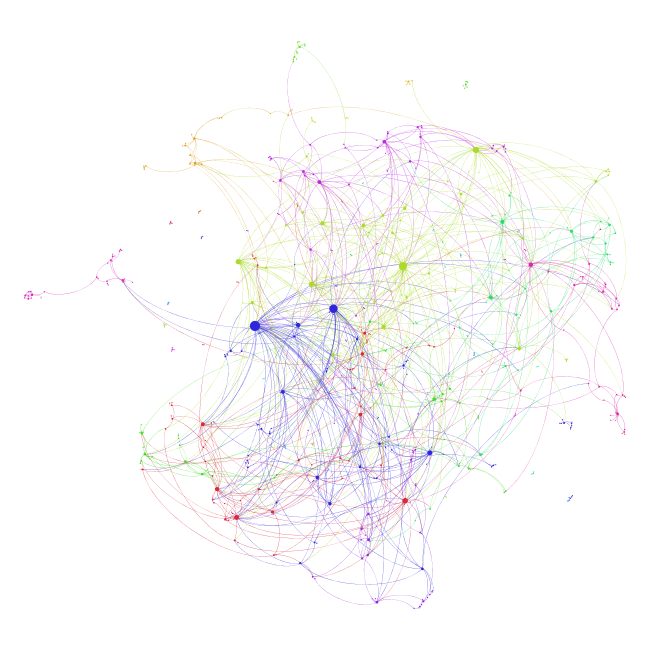RDF, time, implementation
Continuing to investigate about RDF as model framework for future works, it is no surprise to see that triple model include some textbook metaphysic problems : time and parts. I think I will put philosophical considerations for later and dive directly into formalisation problem. If you are interested by the philosophical part, Peter Simons’ Parts and Roderick Chisolm’s Person and Object should be good starts.
time
There have been some investivation about temporal RDF graph by Gutierrez. The formalism (s p[t] o) he proposed could certainly be converted into a non temporal graph where relations keep a temporal property.
mary is-married-with[1999-2008] john
could be translated to :
mary is-part-of marriage-marry-john
marriage-marry-john validity 1999-2008
The obvious fact is that it multiply quiet quickly the complexity of declarations and queries. But it also give a better understanding of objects where parts come in and out more than one time.
implementation
Anyway the problem is that temporal graph are not part of the current RDF specification draft nor SPARQL specification draft. One solution could be to switch to graph model where relationships also have properties (eg. Neo4j). But in a some way, I think I’ll now stick to RDF and SPARQL because of W3C and keep it simple’s spirit.
I still have not chose or really tested triplestore solutions. I am thinking of a combination of MongoDB and rdfstore-js.
influence network of philosophers

Here is a quiet brute output of the produced non-temporal graph rendered in gephi. Here is a A0 pdf version of this visualization with label. Big nodes are the usual suspects (Kant, Hegel, Spinoza, Plato, etc.). It is mainly for eyecandiness purpose. We all agree this is far from informative as viz and conforts me in my position about social network visualization.